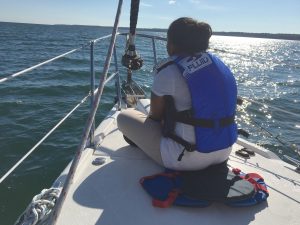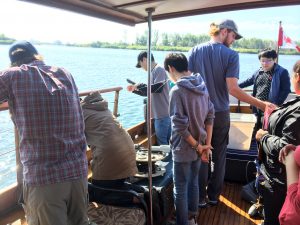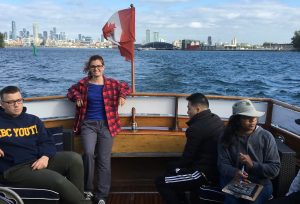Teaching
A link to a short video on my teaching style
Classes taught in 2019/2020
EESC33 Environmental Science Field Course – Fall 2019
 |
 |
 |
For a description of 2019 and guidelines of pre-reqs and how to enrol, please watch video below ( https://youtu.be/f3Ifj-fz9_k) and read this description of class at EESC33-Field-School-2019
The course is aimed at students starting their 3rd and 4th year in Environmental Science who are interested in collecting and analyzing water quality data around the Greater Toronto Area. The first two field trips are on Thursday 29th August and Friday 30th August 2019, just before fall classes start.The third field trip is on morning of Thursday 5th September.
Enrolment is by permission of instructor, so please email me at wells@utsc.utoronto.ca if interested. A description of the enrolment process is at EESC33-Field-School-2019
There is a fee of $235 to help cover some of the field trip costs. This needs to be paid by T-Card to Anniekostadinova ( akostadinova@utsc.utoronto.ca ) before Friday August 16th.
Previous classes
EES1120 The Fluid Dynamics of Contaminant Dispersal in Fluids – fall 2018
This course will introduce the mechanisms of contaminant transport in lakes and the coastal ocean. The emphasis will be on a practical understanding of different dispersion regimes from point and distributed pollution sources. Students will learn to use the basic equations that model these processes and understand how these equations are used in water quality models. Students will also be introduced to field measurement techniques and learn to compare field data with model data. Among the subjects to be discussed are the dispersion of pollutants in lakes, rivers and the coastal zone, mixing in stratified estuaries and the dynamics of the seasonal thermocline.
Some videos of class field trips are at https://youtu.be/r_vZxo0cmyU and https://youtu.be/3fc5XYiKLrY
EESC19 Marine Systems – winter 2019
The world’s oceans constitute more than 70% of the earth’s surface environments. This course will introduce students to the dynamics of ocean environments, ranging from the deep ocean basins to marginal seas to the coastal ocean. The large-scale water circulation is examined from an observationally based water mass analysis and from a theoretical hydro-dynamical framework. The circulation of marginal seas, the role of tides, waves and other currents are studied in terms of their effects upon the coastal boundary.